Auditoriums & Theaters Noise Control: Creating Sonic Excellence
Transform your space into a haven of sonic excellence, ensuring clear acoustics, minimizing disruptions, and providing an immersive experience for both performers and audiences.
Understanding the Acoustic Challenges:
Auditoriums and theaters present unique challenges due to their expansive spaces and the need for pristine sound quality. Identifying and addressing these challenges is crucial for achieving optimal acoustic conditions.
Common Acoustic Challenges:
- Reverberation: Excessive echoes affecting sound clarity.
- Background Noise: External disturbances impacting performances.
- Stage Noise: Unwanted noise originating from the stage.
- Uneven Sound Distribution: Inconsistencies in sound quality across the auditorium.
Comprehensive Noise Abatement Strategies:
Explore a multifaceted approach to tackle each acoustic challenge and create a balanced auditory environment.
Acoustic Panels and Baffles:
Install acoustic panels on walls and ceilings to absorb sound reflections and reduce reverberation.
Hang acoustic baffles strategically to control noise and enhance the overall acoustic environment.
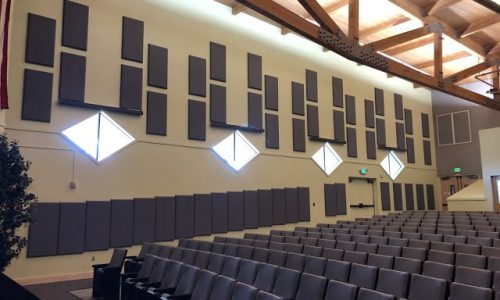
Ceiling Clouds
- Implement suspended ceiling clouds to absorb sound and minimize echoes, particularly in high-ceiling auditoriums.
- Design ceiling treatments that complement the aesthetics of the space while serving acoustic purposes.

Curtains and Drapes
- Use heavy, sound-absorbing curtains or drapes on stage and around the auditorium to control sound reflections.
- Opt for materials with acoustic properties that contribute to overall noise reduction.
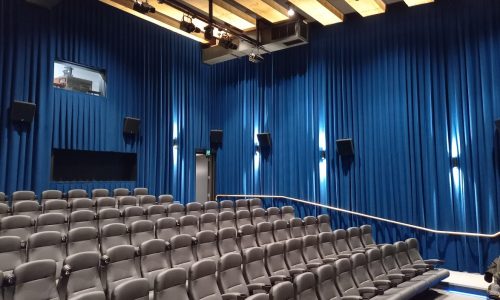
Seating Arrangement:
- Consider the placement and design of seating to optimize sound distribution and absorption.
- Integrate absorptive materials into the seating, such as fabric-covered chairs, to reduce noise reflections.
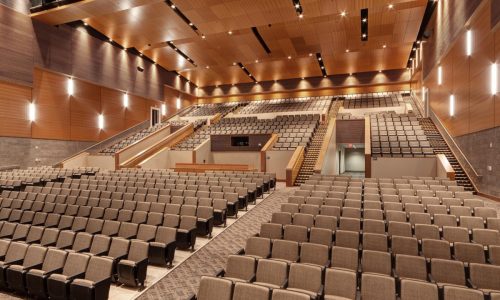
Stage Design:
- Design the stage with acoustic considerations, incorporating materials that absorb sound and reduce stage noise.
- Utilize modular stage elements with built-in acoustic properties.
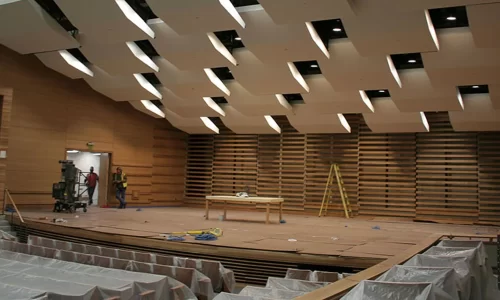
Floor Coverings:
- Select floor coverings with sound-absorbing qualities to minimize footstep noise and impact sound.
- Consider carpeting or area rugs to enhance overall noise control.
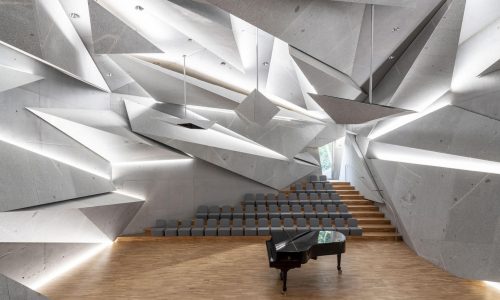
Orchestra Pit Treatment:
- Apply acoustic treatment to the orchestra pit, including sound-absorbing materials on the walls and covering the pit itself.
- Optimize the design to ensure balanced sound distribution to both the stage and the audience.

Sound Reinforcement System:
- Invest in a high-quality sound reinforcement system that meets the specific acoustical requirements of the auditorium.
- Regularly maintain and calibrate the sound system to ensure optimal performance.
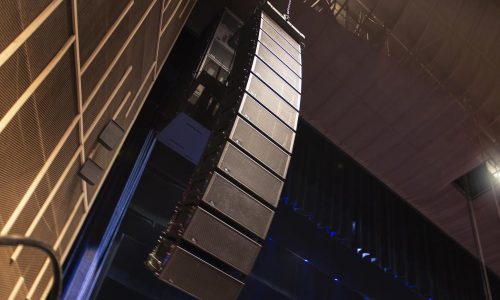
Noise Monitoring and Control:
- Implement a noise monitoring system to identify and address any sound issues promptly.
- Train staff on noise control measures and enforce guidelines to maintain a quiet and enjoyable environment.

